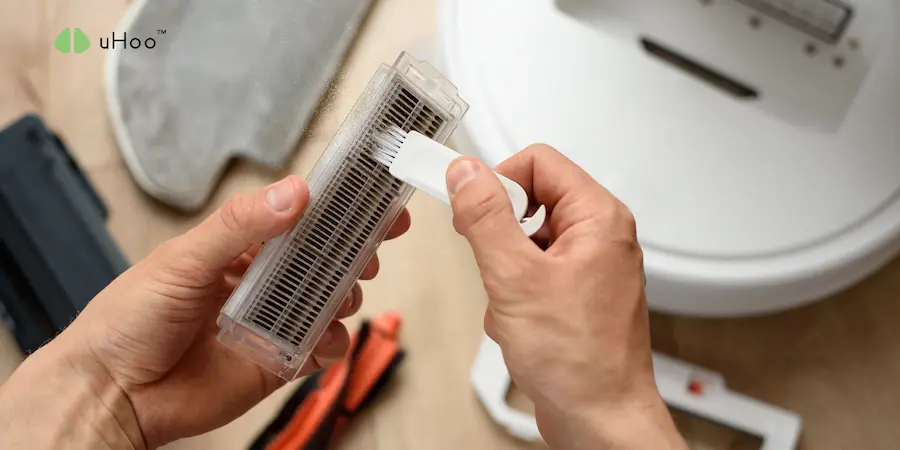Many pollutants are imperceptible, yet their presence can significantly impact our health, leading to respiratory issues, allergies, and general discomfort. In a dense urban setting, typical indoor pollutants often include:
- Particulate Matter (PM2.5 and PM10): These microscopic particles are a major concern. PM2.5 (particles 2.5 micrometers or smaller) are particularly dangerous because they can penetrate deep into the lungs and even enter the bloodstream. Sources include vehicle exhaust, industrial emissions, smoke from burning (common in urban fringes or from cooking), and even dust stirred up by daily activities.
- Allergens: Pollen from local flora, pet dander, dust mite feces, and mold spores are pervasive allergens. High humidity particularly provides an ideal breeding ground for dust mites and mold, making these a constant challenge.
- Volatile Organic Compounds (VOCs): These are gases emitted from various solids or liquids, including paints, varnishes, cleaning supplies, furniture, air fresheners, and even certain building materials. While HEPA filters don’t directly capture VOCs, understanding their presence is crucial as they can irritate airways.
- Bacteria and Viruses: While HEPA filters don’t “kill” these microorganisms, they can effectively trap them when they are airborne, especially when attached to larger dust particles or respiratory droplets.
- Fibers and Dust: Everyday household dust, lint, and fibers from clothing and carpets can accumulate, carrying various irritants and allergens.
How Do HEPA Filters Work?
HEPA stands for High-Efficiency Particulate Air. To earn the HEPA designation, a filter must be independently tested and certified to capture at least 99.97% of airborne particles that are 0.3 micrometers (µm) in diameter. This specific size is known as the “Most Penetrating Particle Size” (MPPS) because it’s the most challenging for filters to trap. By being effective at this size, HEPA filters are consequently highly efficient at capturing both larger and smaller particles.
The magic of a HEPA filter lies in its intricate structure: a dense, randomly arranged mat of extremely fine fibers, usually made of fiberglass. As air is forced through this elaborate labyrinth, particles are captured through a combination of three sophisticated mechanisms:
- Interception: This mechanism applies to larger particles. As these particles travel through the filter, their path brings them within one fiber’s radius, causing them to simply touch and stick to the fiber. Think of it like a sticky web catching debris.
- Impaction: Medium-sized particles, due to their inertia, are unable to navigate the sharp turns and twists of the filter’s fibers. They continue in a straight line, impacting directly onto a fiber and becoming trapped. This is particularly effective for particles like larger pollen grains or heavier dust.
- Diffusion: This is crucial for the smallest, most elusive particles (those below 0.1 micrometers, including PM2.5 and even some viruses). These tiny particles move in a very erratic, zig-zagging motion due to collisions with gas molecules in the air (a phenomenon known as Brownian motion). This random movement significantly increases the probability that they will eventually collide with a fiber and become permanently attached.
It’s the synergy of these three mechanisms that allows HEPA filters to be so remarkably effective across the entire spectrum of particle sizes, from large visible dust to invisible PM2.5. By effectively removing these pervasive indoor pollutants, HEPA filters provide a multitude of benefits:
- Improved Respiratory Health: By significantly reducing inhalable particulate matter, HEPA filters protect your lungs from irritation and long-term damage, a vital consideration in a high-pollution urban environment.
- Allergy and Asthma Relief: For those suffering from allergies or asthma, the removal of common triggers like pollen, pet dander, dust mites, and mold spores can lead to a dramatic reduction in symptoms, allowing for easier breathing and better sleep.
- Reduced Dust Accumulation: Fewer airborne particles mean less dust settling on surfaces, leading to a visibly cleaner home and less frequent dusting.
- Fresher Indoor Air: While not directly removing odors, by eliminating the microscopic particles that often carry smells (like smoke or pet dander), HEPA filters contribute to a fresher-smelling environment.
- Protection Against Biological Contaminants: By trapping airborne bacteria and viruses (often attached to larger particles), HEPA filters can contribute to reducing the spread of airborne illnesses.
While HEPA filters are titans in the battle against particulate pollutants, understanding your indoor air comprehensively requires more detailed insights. A uHoo air quality monitor can do the same, but in a more detailed manner, providing real-time data on a much broader range of parameters, including specific pollutant levels (like PM2.5, VOCs, CO2, NO2), temperature, and humidity, allowing you to not only see the HEPA filter’s effectiveness but also identify other hidden issues in your home’s air.

